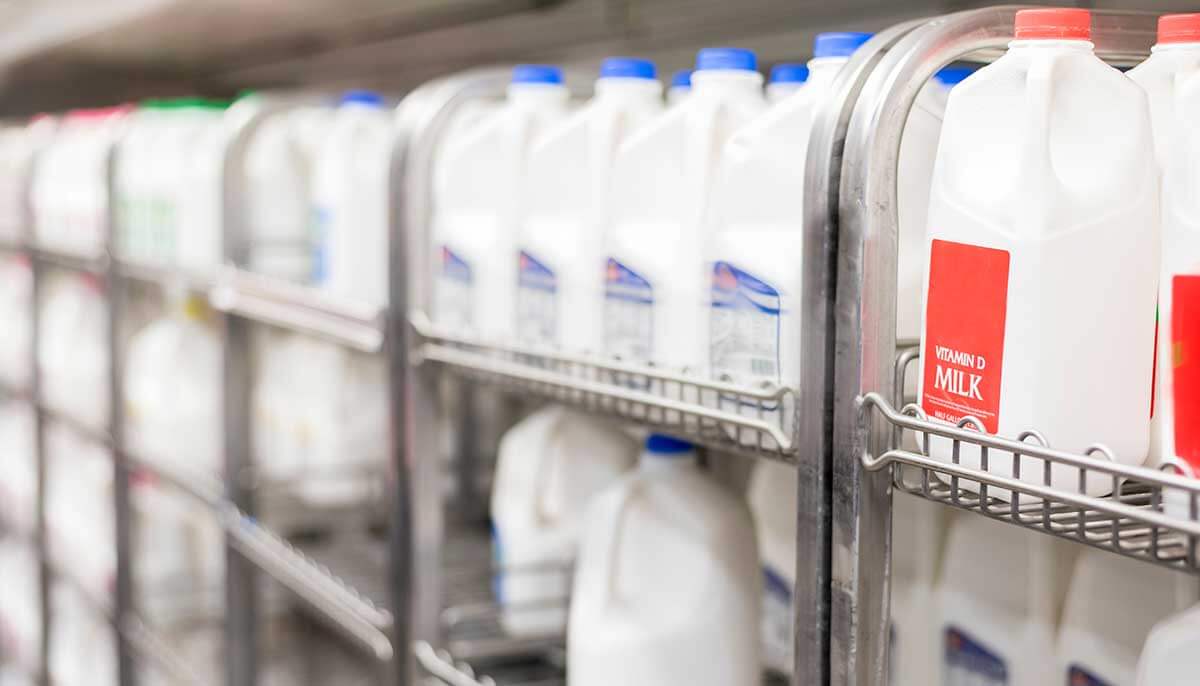Learn why products are given a date label and how to safely store and consume dairy products past the printed date.

People often wonder if it’s safe to consume milk after the date printed on the label. Understanding why products are labeled with a date, as well as how to safely store and consume milk, will enable consumers to extend the life of their products and prevent unnecessary food waste.
Manufacturers apply a date to food products to ensure quality. Products are dated in one of two ways: a use-by date, which gives an estimated period of time for which the product will be of best quality; or a production date, a code or series of numbers printed on the label to identify the date and time of production. Meat, poultry, egg and dairy products typically have use-by dates, while canned goods and shelf-stable items have the production date on the outer packaging.
There is no uniform phrasing applied to products that have a use-by date, though four phrases are used most frequently:
Because dates are applied to ensure quality, milk is more than likely safe to drink beyond the date printed on the package. Regardless of the printed date, the best way to determine whether milk is spoiled is with a simple sniff test. Spoiled foods develop an off odor, flavor or texture due to naturally occurring spoilage bacteria. If milk exhibits any characteristics of spoilage, it should be thrown out. Otherwise, the milk can be consumed with confidence.
Ensuring milk will last beyond its printed date starts with grocery shopping. When buying milk, check the sell-by date to make sure it hasn't already passed (most grocery stores ensure their stock is up to date). Then, estimate whether the product will be used up within a few days of the use-by date.
Here are some other considerations to keep products as fresh as possible:
Freezing milk is a great way to store it for use at a later date. Milk will expand when it's frozen, so be sure to leave room in the container so it won't burst. After freezing, milk can be thawed in the refrigerator or in cold water and is safe for consumption. For best results, milk should only be frozen for 3–6 months.
In this episode of Ask a Nutritionist, Maureen Bligh, RDN, addresses how to freeze milk.
Watch nowFood waste is a growing concern in the United States, where approximately 30 percent of the food supply is lost or wasted at the retail and consumer levels. Confusion over the meaning of dates displayed on the package or label can lead to a loss of wholesome food that could otherwise be used. Understanding food date labeling and continuing to use food that doesn’t exhibit signs of spoilage is an important way to reduce food waste.
Make a milky treat like rice pudding. Simply bring 3/4 cup of long-grain rice to a boil, drain, add 5 to 6 cups of milk, 1 cup of sugar, 1 split vanilla bean and a large pinch of salt. Simmer over low heat, stirring occasionally. After an hour, add 1 cup of milk and allow it to absorb before serving.
In the case of frequently having milk on hand after its sell-by date, buy smaller containers of it or try shelf-stable milk. Advances in processing and packaging have led to new milk products with extended shelf lives that don't need refrigeration until after they're opened.